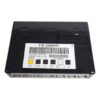Is your 2010 Cadillac Escalade suffering from mysterious electrical problems? A failing Body Control Module, or BCM, is often the culprit. The BCM acts as the central nervous system for your vehicle’s body electronics, controlling everything from power windows and locks to interior lighting and security systems. When it starts to fail, it can cause a wide range of frustrating and difficult-to-diagnose issues. This replacement BCM is the reliable, straightforward solution to restore your vehicle’s proper function.
This isn’t just a part in a box. We provide a complete, ready-to-install solution. Upon purchase, simply provide us with your vehicle’s VIN, and our technicians will program the module with the latest GM software specific to your Escalade. This critical step ensures compatibility and avoids the need for expensive dealership programming, making the installation process as simple as possible.
Common Symptoms of a Failing BCM
- ✔ Erratic or non-functional power windows, door locks, or mirrors.
- ✔ Interior or exterior lights (headlights, dome lights) that stay on, flicker, or won’t turn on.
- ✔ The security system engaging randomly or preventing the vehicle from starting.
- ✔ Dashboard warning lights, such as the airbag or service stability system light, illuminating without a clear cause.
- ✔ HVAC (heating and air conditioning) controls not responding.
- ✔ Intermittent no-start conditions or communication loss with other vehicle modules.
Why Choose Our Pre-Programmed 2010 Escalade Body Control Module?
Getting your luxury SUV back on the road shouldn’t be a hassle. Our process is designed for the DIY mechanic and professional alike. By programming the module to your VIN before shipping, we eliminate the most complex part of the repair. This is a direct-fit replacement for the original unit, designed to meet or exceed OEM specifications for performance and reliability. You get a dependable part that restores function without the high cost and inconvenience of a dealership visit.
Installation and Post-Install Notes
While this module is designed for plug-and-play installation, some GM vehicles may require simple post-installation relearn procedures. These can typically be performed with a capable bi-directional scan tool.
- Airbag System Sync: If the airbag warning light is on after installation, a procedure called ‘Setup SDM Primary Key in BCM’ is needed to sync the new BCM with the airbag system. This is only required if the light appears.
- Brake Pedal Position Relearn: On some models, a brake pedal position sensor recalibration may be necessary to ensure correct brake light operation and traction control function.
Always consult a factory service manual or a qualified technician for vehicle-specific procedures.
Compatible Part Numbers
This module is a direct replacement for a wide range of part numbers, including: 10382479, 15093910, 15276271, 15299986, 15819552, 15828601, 15837419, 15872388, 15872421, 15880684, 15921352, 15921353, 15948438, 15948439, 20815898, 20839063, 20864767, 20864768, 20921435, 20921436, 20935349, 22860591, 25826124, 25826125, 25847588, 25847589, 25892622, 25910474, 25934762, 25934763, and 95151084.
Frequently Asked Questions
Do I need to get this BCM programmed by a dealer?
No. We handle all the programming for you before we ship the part. Just provide your vehicle’s VIN during or after checkout, and it will arrive ready to install.
Where is the BCM located on a 2010 Escalade?
On the 2010 Cadillac Escalade, the Body Control Module is typically located under the steering column, behind the lower driver’s side dashboard panel.
Is this a plug-and-play installation?
Yes, for the most part. After physically installing the VIN-programmed module, some vehicles may require a simple ‘relearn’ procedure for systems like the airbag or brake pedal position sensor, which can be done with a professional scan tool.
Do I need to return my old BCM?
No, there is no core charge for this part. You can keep your original module.
How do I find my VIN?
Your 17-digit Vehicle Identification Number (VIN) can be found on the driver’s side of the dashboard (visible through the windshield), on the driver’s side door jamb sticker, or on your vehicle’s registration and insurance documents.

